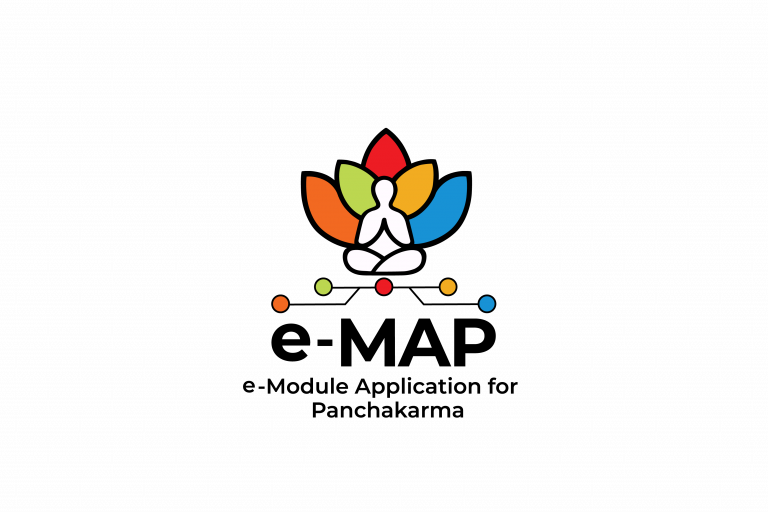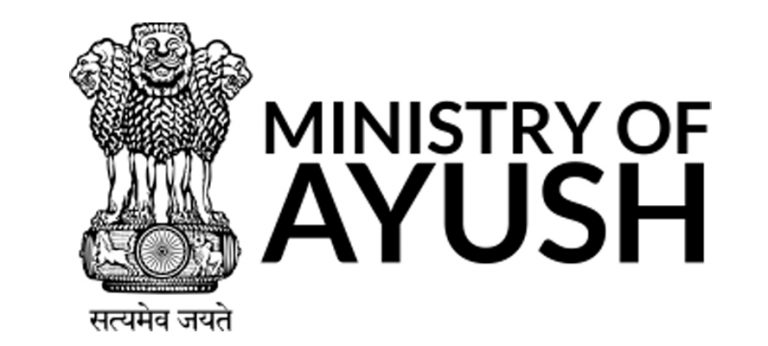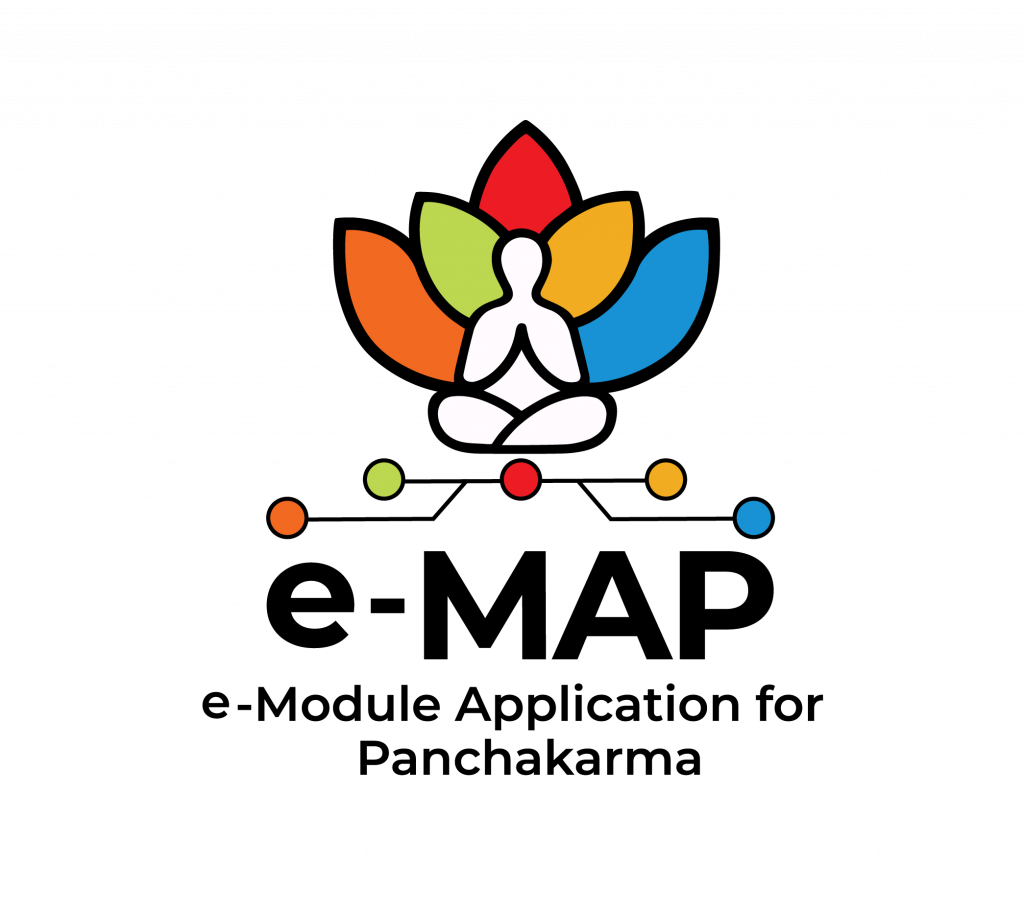
Intense Module 1
Introduction
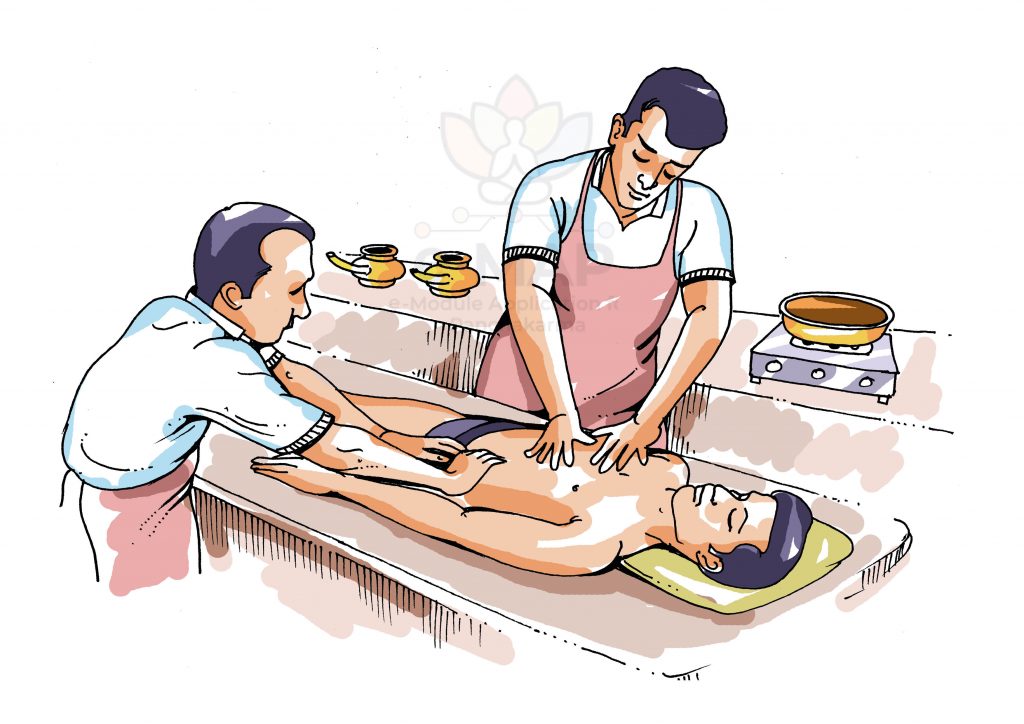
EXPLANATORY NOTES
The term Karma has been explained under various headings in various contexts. Caraka explains that Sāmānya (Generic Concomitance), Viśeṣa (Variant factor), Dravya (Matter), Guṇa (Quality), Karma (Action) and Samavāya (Inseparable Concomitance) as the causative factor or Kāraṇas for whole universe. So, Karma is one among these Ṣaṭ Kāraṇas.
संयोगे च विभागे च कारणं द्रव्यमाश्रितम्|
कर्तव्यस्य क्रिया कर्म कर्म नान्यदपेक्षते|| [i]
Karma present in the matter is the cause of combination and separation. Karma is the action relating to something to be achieved. It does not require any other factor for its action.
कर्म – कृ dhātu and मनिन् pratyaya अर्ध्दचादि Sūtra
कर्तु क्रियया आप्तुमिष्टतमं कर्मसंज्ञं स्यात् [ii]
Means that Kārya which is been done by the agent or Karta is known as Karma.
कर्तृकरणसंयोगात् क्रिया [iii]
Karma or actions are manifested by the combination of the agent (Karta) and the instrument (Karaṇa)
Whatever described above are the general opinion about Karma. Now we will see the different presentations of Karma in different contexts.
[i] Cha. Su 1/52
[ii] Vachaspatya
[iii] Cha. Su 11/32
DAIVA KARMA OR PŪRVADEHIKA KARMA
निर्दिष्टं दैवशब्देन कर्म यत् पौर्वदेहिकम्|
हेतुस्तदपि कालेन रोगाणामुपलभ्यते|| [i]
The deeds performed in the previous life or past time are known as Daiva Karma or Pūrvadehika Karma(fate) also constitutes in due course causative factors for the manifestation of diseases. In other words, it could be also said that some causes do not produce disease at the same time because they have less strength (Karmaja Roga).
DRAVYA KARMA
द्रव्याणि हि द्रव्यप्रभावाद्गुणप्रभावाद्द्रव्यगुणप्रभावाच्च तस्मिंस्तस्मिन् काले
तत्तदधिकरणमासाद्य तां तां च युक्तिमर्थं च तं तमभिप्रेत्य यत् कुर्वन्ति, तत् कर्म [ii]
It is not that the various drugs and diets act only by virtue of their qualities. In fact, they act by virtue of their own nature or qualities or both on a proper occasion, in a given location, in appropriate condition and situations; the effect so produced is considered to be their action or karma, the factor responsible for the manifestation of the effect is called as Vīrya and where they act is the Adhiṣṭhāna, when they act is the time, how they act is the Upāya or mode of action
PRAYATNĀDI KARMA
प्रयत्नादि कर्म चेष्टितमुच्यते| [iii]
Action in the form of curative effect is known as Karma. Karma here denotes the various types of action including efforts. This also includes the entire activity relating to the transformation of qualities and heaviness etc., it includes all kinds of action – even actions that are subtle enough in their latent stages.
कर्म वाङ्मनःशरीरप्रवृत्तिः| [iv]
Action includes verbal, mental and body (physical) activities.
Eg; Ākuñcana, Prasaraṇa, Utkṣepaṇa, Apakṣepaṇa, Gamana etc…
KARMA IN CIKITSĀ
प्रवृत्तिस्तुखलुचेष्टाकार्यार्था; सैवक्रिया, कर्म, यत्नः, कार्यसमारम्भश्च||[v]
Pravṛtti is the effort taken for the accomplishment of objective. This is also known as Kriyā, Karma (action), Yatna (effort), Kāryasamārambhaḥ (commencement).
In Vimānāsthāna, Pravṛtti is also explained in Daśavidha Parīkṣyā Viṣaya
दशविधं तु परीक्ष्यं कारणादि यदुक्तमग्रे, तदिह भिषगादिषु संसार्य सन्दर्शयिष्यामः –
इह कार्यप्राप्तौ कारणं भिषक्, करणं पुनर्भेषजं, कार्ययोनिर्धातुवैषम्यं, कार्यं धातुसाम्यं, कार्यफलं सुखावाप्तिः,अनुबन्धः खल्वायुः, देशो भूमिरातुरश्च, कालः पुनः संवत्सरश्चातुरावस्था च, प्रवृत्तिः प्रतिकर्मसमारम्भः, उपायस्तु भिषगादीनां सौष्ठवमभिविधानं च सम्यक्| [vi]
Suśruta in Sūtrasthāna first chapter explains
एवमेतत् पुरुषो व्याधिरौषधं क्रियाकाल इति …………………………… क्रियाग्रहणात् स्नेहादीनि च्छेद्यादीनि च कर्माणि व्याख्यातानि, कालग्रहणात् सर्वक्रियाकालानामादेशः ||[vii]
Ḍalhaṇa while explaining this sloka quoted the term Karma as Snehana, Svedana, Vamana, Virecanādi Karma or different process
स्नेहादीनीत्यादिशब्दात् स्वेदनवमनविरेचनास्थापनानुवासनधूमनस्यकवलग्रहगण्डूषपाचनसंशमनादीनां ग्रहणं [viii]
KARMA ACCORDING TO CAKRAPĀṆI IN PAÑCAKRMA
The term pañcakarma has been used for the first time in Caraka Sūtrasthāna Apāmārgataṇḍulīyam Adhyāya
तान्युपस्थितदोषाणां स्नेहस्वेदोपपादनैः|
पञ्चकर्माणि कुर्वीत मात्राकालौ विचारयन्||[ix]
In the event of vitiated doṣas brought forth by Snehana and Svedana therapies, a physician should administer the Pañcakarma paying due regard to the dose and time. Here Cakrapāṇi explains the meaning of Upasthita doṣas
उपस्थितदोषाणामिति शाखां त्यक्त्वा कोष्ठगमनेन तथा लीनत्वपरित्यागेन प्रधानावस्थाप्राप्तदोषाणाम्[x]
Doṣas which have left the periphery and moving towards Koṣṭha is known as Upasthita Doṣas
इह वमनादिषु कर्म लक्षणं बहु अतिकर्तव्यतायोगि दोष निर्हरण शक्तिज्यायस्त्वम्[xi]
The लक्षण of कर्म is बहुअतिकर्तव्यतायोगि (multiple and broad-spectrum action) & having the capacity to eliminate the doṣa (दोष निर्हरण शक्ति)
[i] Cha. Sha 1/116
[ii] Cha. Su 26/13
[iii] Cha. Su 01/49
[iv] Cha. Su 11/39
[v] Cha. Vim 08/77
[vi] Cha. Vim 08/84
[vii] Su. Su 01/47
[viii] Ḍalhaṇa on Su. Su 01/47
[ix] Cha. Su 02/15
[x] Cakrapāṇi on Cha. Su 02/15
[xi] Cakrapāṇi on Cha. Su 02/15
Ācārya Suśruta has explained Trividha Karma in fifth chapter of Sūtrasthāna namely agropāhāraṇīya Adhyāya.
त्रिविधं कर्म- पूर्वकर्म, प्रधानकर्म, पश्चात्कर्मेति; तद्व्याधिं प्रत्युपदेक्ष्यामः || [i]
According to him Trividha Karma are Pūrvakarma, Pradhānakarma and Paścātkarma
In the Ḍalhaṇa ṭīkā of the above sloke it is mentioned as below
लङ्घनादि विरेकान्तं पूर्वकर्म व्रणस्य च| पाटनं रोपणं यच्च प्रधानं कर्म तत् स्मृतम्|
बलवर्णाग्निकार्यं तु पश्चात्कर्म समादिशेत् [ii]
Here he mentions Trividha Karma in the context of Vraṇa
Pūrvakarma– Laṅghana, Dīpana, Pācana, Snehana, Svedana, Vamana, Virecana
Pradhānakarma – Pāṭana and Ropaṇa of Vraṇa
Paścātkarma– Bala, varṇa, Jaṭharāgni Vardhana Karma
In the continuation of the above sloka of Ḍalhaṇa he explains Trividha Karma which is relevant to Śodhana.
अन्ये तु संशोध्यस्य पाचनस्नेहनस्वेदनानि पूर्वकर्म, वमनविरेचनबस्तिनस्यसिरामोक्षणानि प्रधानं कर्म,
पेयाद्यन्नसंसर्जनं पश्चात्कर्म
Here Trividha Karma means
Pūrvakarma– Pācana, Snehana, Svedana
Pradhānakarma – Vamana, Virecana, Basti, Nasya, Raktamokṣaṇa. So basically, all the Pañcakarma is mentioned here
Paścātkarma– Peyādi Saṃsarjana Krama
There is one more opinion in the same Ḍalhaṇa Sloka as below
अपरे तु चयादीनां पूर्वरूपान्तानामातङ्कोत्पत्तेः प्राग्यत् क्रियते तत् पूर्वकर्म,
आतङ्कोत्पत्तौ यत् तत् प्रधानं कर्म, निवृत्तातङ्कस्यानुबन्धोपचरणाय यत् तत् पश्चात्कर्म|
Here the explanation is based on the Karma which has to be done in
Pūrvakarma– Sañcaya, Prakopa, Prasara, Sthānasaṃśraya and pūrvarūpāvastha.
Pradhānakarma – After Rogotpatti / Vyaktāvastha
Paścātkarma– After Roganivṛtti, and for Roga Apunarbhava hetu
[i] Sus. Su 5/3
[ii] Nibandhasangraha vyakhya- Ḍalhaṇakṛtaon Sus.Su 5/3
PURVA KARMA
Before the actual process begins the body should be prepared with certain procedures.
पाचनैर्दीपनैः स्नेहैस्तान् स्वेदैश्च परिष्कृतान्||
शोधयेच्छोधनैः काले यथासन्नं यथाबलम्| [i]
In the Chapter Doṣopakramaṇīya Adhyāya in Aṣṭāṅga Hṛdaya Sūtrasthāna Vāgbhaṭa explains the treatment of Āma. Here is explains the Karma that has to be followed before going for Śodhana
He says Āma doṣa has to be modified by means of oleation using Snehas prepared with drugs which are Pācana/ Digestive and Dīpana / Carminative followed by Svedana or Sudation. Then they have to be expelled out by means of appropriate Śodhana therapy through the proximal route in proper time, considering the strength of the patient.
- Pācana – Āma Pācana – Digestion of Āma
- Dīpana – Agni Dīpana – Enhancing the digestive fire
- Snehana – Internal and External application of Sneha
- Svedana – Sudation
Dīpana – Pācana
पचेत् न आमं वह्निकृच्च दीपनं तत् यथा मिशि
पचत्यामं न वह्निं च कुर्यात पाचनं
नागकेसरवत् विद्यात् चित्रको दीपनपाचन [ii]
Dīpana drugs does not digest Āma but only increases Agni. Example is Miśī or Fennel Seeds
Pācana Drugs helps to digest the Āma but will not increase Agni. Example is Nāgakesara or Mesua ferra. The drug Citraka or Plumbago zeylanica does both Dīpana and Pācana.
Once the Agni is increased and Āma is digested body is ready for Snehana and Svedana
Snehana
स्नेहोऽनिलं हन्ति मृदूकरोति देहं मलानां विनिहन्ति सङ्गम्|| [iii]
Oleation therapy alleviates aggravated Vāyu, softens the body and disintegrates the adhered morbid material in the channels of circulation
Svedana
स्निग्धस्य सूक्ष्मेष्वयनेषु लीनं स्वेदस्तु दोषं नयति द्रवत्वम्|| [iv]
In the person who has undergone oleation therapy fomentation liquifies the adhered morbid materials in the fine channels of the body
स्नेहक्लिन्नाः कोष्ठगा धातुगा वा
स्रोतोलीना ये च शाखास्थिसंस्थाः|
दोषाः स्वेदैस्ते द्रवीकृत्य कोष्ठं
नीताः सम्यक् शुद्धिभिर्निर्ह्रियन्ते| [v]
The doṣas which are based in Koṣṭha, dhātus or in latent srotases or else based at Śākhās or Asthi causing diseases; when subjected to Sneha procedures are made Klinna or slimy are to be liquified by Svedana or sudation and thus brought to Koṣṭha and then eliminated through the proximal route by judicious use of Śodhana procedures.
[i] A.H. Su 13/29
[ii] Sha. Sam Pūrva Khanda 4
[iii] Cha. Si 1/7
[iv] Cha. Si 1/8
[v] A.H. Su 17/30
PRADHANA KARMA
Pradhāna karma includes Vamana, Virecana, Asthapana Vasti, Anuvāsana Vasti and Nasya according to Caraka school of thought and Vamana, Virecana, Vasti, Nasya and Raktamokṣaṇa according to Suśruta school of thought. After proper Pūrvakarma the Doṣas which are brought from Śākhā to Koṣṭha should be eliminated through the nearest route.
Vamana (Therapeutic Emesis)
तत्र दोषहरणमूर्ध्वभागं वमनसञ्ज्ञकम् [i]
Vamana is defined as the process by which the doṣas are eliminated through the Ūrdhvabhāga.
ऊर्ध्वं मुखेन दोषनिर्हरणं भजत इति ऊर्ध्वभागम्|[ii]
Cakrapāṇi mentions that Ūrdhvabhāga should be considered as Ūrdhvamukha or mouth.
Vamana Karma, the first measure amongst Pañcakarma, has been considered as the best line of treatment of Kaphaja Roga.
Virecana (Therapeutic Purgation)
तत्र दोषहरणमूर्ध्वभागं वमनसञ्ज्ञकम्, अधोभागं विरेचनसञ्ज्ञकम्
In continuation to the above sloka of Caraka the definition of Virecana is also explained in Kalpa Sthana.
Virecana is defined as the process by which the Doṣas are eliminated through the Adhobhāga.
अधो गुदेन दोषनिर्हरणं भजत इति अधोभागम्|[iii]
Cakrapāṇi mentions that Adhobhāga should be considered as Guda or anal route.
In Virecana Karma the medicine administered through the oral route gets digested and acts in the elimination of Pitta. Virecana is the prime modality of treatment for Pitta Doṣa Nirharaṇa
Vasti Karma (Enema therapy)
The administration of medicated herbal decoctions or Kvātha along with Makṣika or honey, Saindhava or rock salt, Sneha or oils, Kalka or medicinal paste (Nirūha Vasti) or medicated oils (Sneha Vasti) through Gudamārga to act in the predominant site of Vāta i.e., Colon is known as Vasti Karma or Enema therapy.
शाखागताः कोष्ठगताश्च रोगा मर्मोर्ध्वसर्वावयवाङ्गजाश्च|
ये सन्ति तेषां न हि कश्चिदन्यो वायोः परं जन्मनि हेतुरस्ति||३८||
विण्मूत्रपित्तादिमलाशयानां विक्षेपसङ्घातकरः स यस्मात्|
तस्यातिवृद्धस्य शमाय नान्यद्बस्तिं विना भेषजमस्ति किञ्चित्||३९||
तस्माच्चिकित्सार्धमिति ब्रुवन्ति सर्वां चिकित्सामपि बस्तिमेके|४०|[iv]
There is none other than Vāyu which is the causative factor of diseases in Śākhā, Koṣṭha, Marma, Ūrdhva and Sarvāvayava and Aṅgas. Vāyu is responsible for Samyoga (combination) and Vikṣepa (separation) of stool, urine, Pitta, Kapha other excreta and tissue elements. When this Vāyu gets exceedingly aggravated there is no remedy other than Vasti for its alleviation. Hence Vasti is considered as Ardha Cikitsā or Half of the treatment while some considers this as complete treatment also.
Nasya Karma (Nasal Instillation of Medicine)
Nasal administration of medication is called Nasya. The nose is the gateway to the head. Nasya Karma is important among Pañcakarma as it is useful in the management of Ūrdhvajatrugata rogas.
ऊर्ध्वजत्रुविकारेषु विशेषान्नस्यमिष्यते|
नासा हि शिरसो द्वारं तेन तद्व्याप्य हन्ति तान्||१|| [v]
Medicine instilled through nose spreads throughout the Śiras and help in the evacuation of Doṣa and thereby pacifying the diseases.
Raktamokṣaṇana Karma (Blood Letting therapy)
Removing vitiated blood from the body is called as Raktamokṣaṇana. It is used in the management of Rakta and Pittaja Rogas. It is classified into Śastravisrāvaṇa and Anuśastravisrāvaṇ. The former is again classified into Pracchāna and Sirāvyadha while the latter is classified into Śṛṅga, Jalaukāvacāraṇa, Alābu and Ghaṭīyantra.
Pañcakarma according to different Ācāryas
Caraka | Suśruta/ Ḍalhaṇa | Vāgbhaṭa Pañca Śodhana | Sha. Sam | Bha. Pra | Y. R |
Vamana | Vamana | Nirūha | Vamana | Vamana | Vamana |
Virecana | Virecana | Vamana | Virecana | Virecana | Recana |
Anuvāsana | Basti | Virecana | Nasya | Anuvāsana | Nasya |
Nirūha | Nasya | Śirovirecana | Nirūha | Nirūha | Karṇapūraṇa |
Nasya | Raktamokṣaṇana | Asravisruti | Anuvāsana | Nāvana | Raktavisruti |
PAŚCĀT KARMA
After the Śodhana therapy the Agni and the strength of the body becomes weak, so as to restore this specific diet schedule is mentioned. They bring the body back to normalcy. This mainly includes Saṃsarjana Krama.
Apart from this there are specific procedures told as Paścāt Karma in different Karmas. For example, after Vamana to remove the residual Kapha, Kavala and Dhūmapāna is told. After Nasya also Kavala and Dhūmapāna is told to remove the residual Kapha doṣa. In Vamana and Virecana Saṃsarjana Krama are told to gradually increase Agni again. After Vasti Saṃsarjana Krama is not told because the Agni is not affected.
विरेक: पावकं हन्ति तदधिष्टान संप्लवात्
न तु बस्तितथा तस्मात् यथोन्नयति पावकमिति[vi]
[i] Cha.Kalp 1/4
[ii] Cakrapāṇi on Cha.Kalp 1/4
[iii] Cakrapāṇi on Cha.Kalp 1/4
[iv] Cha. Si. 1/38
[v] A.H. Su 20/1
[vi] Cakrapāṇi
IMPORTANCE OF PŪRVA & PAŚCĀT KARMA IN ŚODHANA
Pūrvakarma includes Dīpana – Pācana, Snehana and Svedana.
Dīpana – Helps in Agni dīpana. Proper Agni dīpana is needed for the digestion of medicines and Sneha.
Pācana – It is important as Pācana Dravyas help in Āmapācana. All kind of Karma are contraindicated in Amavastha.
Once the Agni is increased and Āma is digested body is ready for Snehana and Svedana
Snehana – Snehana alleviates aggravated Vāyu, softens the body and disintegrates the adhered morbid material in the channels of circulation.
Svedana – In the person who has undergone oleation therapy fomentation liquifies the adhered morbid materials in the fine channels of the body. It is important to bring the Doṣas from Śākhā to Koṣṭha and then only it can be eliminated out properly through Mukha Mārga or Guda Mārga. The Doṣas which are based in Koṣṭha, dhātus or in latent srotases or else based at Śākhās or Asthi causing diseases; when subjected to Sneha procedures are made Klinna or Slimy are to be liquified by Svedana or sudation and thus brought to Koṣṭha and then eliminated through the proximal route by judicious use of Śodhana procedures.
Paścāt Karma includes Kavala – Gaṇḍūṣa, Dhūmapāna, Saṃsarjana Krama etc. Apart from this there are procedure specific Paścāt Karmas also.
Kavala and Gaṇḍūṣa with Uṣṇodaka clears the slimy coating in the mouth after Vamana or Nasya and Dhūmapāna clears residual Kapha Doṣas in the Srotases after Nasya and Vamana. By following Saṃsarjana Krama the digestive power and Agni of the patient is normalised as discussed above and the patient becomes
सर्वक्षमो ह्यसंसर्गो रतियुक्तः स्थिरेन्द्रियः|
बलवान् सत्त्वसम्पन्नो विज्ञेयः प्रकृतिं गतः[i]
After Śodhana and Saṃsarjana Krama the patient gets his normal health restored which is indicated by ability to take and digest various ingredients having all the different tastes, non-obstruction to his natural urges, restoration of the zest for life, sharp functioning of the senses, return of strength and endowment of strong will power.
[i] Cha. Si 12/9
ŚODHANA
शोधनं यत् कुपितान् दोषान् निःसार्य बहिः रोगोपशमनं करोति| शमनं पुनर्यत् स्वस्थानस्थितानामेव साम्यहेतुः|[i]
Procedure of evacuation of Prakupita Doṣas from the body for Rogopaśamana is Śodhana.
According to Aṣṭāṅga Hṛdaya Pañcaśodhana is explained as
यदीरयेद्वहिर्दोषान् पञ्चधा शोधनं च तत्|
निरूहो वमनं कायशिरोरेकोऽस्रविस्रुतिः||५||[ii]
Śodhana is the procedure by which vitiated Doṣas are expelled out from the body. There are 5 types of Śodhana – Nirūha Basti, Vamana, Kāyareka or Virecana, Śiroreka or Nasya and Raktamokṣaṇa. Śodhana comes under Laṅghana Cikitsā.
INDICATIONS OF ŚODHANA
Śodhana is indicated in
- Bahudoṣāvasthā
- Those who are planning for Rasāyana & Vājīkaraṇa
- To prevent Kālaja Roga etc.
- In emergency conditions
- Before Rasauṣadhi and Śamanauṣadhi Seva for attaining better results
Bahudoṣa Lakṣaṇa
अविपाकोऽरुचिः स्थौल्यं पाण्डुता गौरवं क्लमः| पिडकाकोठकण्डूनां सम्भवोऽरतिरेव च||
आलस्यश्रमदौर्बल्यं दौर्गन्ध्यमवसादकः| श्लेष्मपित्तसमुत्क्लेशो निद्रानाशोऽतिनिद्रता||
तन्द्रा क्लैब्यमबुद्धित्वमशस्तस्वप्नदर्शनम्| बलवर्णप्रणाशश्च तृप्यतो बृंहणैरपि||
बहुदोषस्य लिङ्गानि तस्मै संशोधनं हितम्| ऊर्ध्वं चैवानुलोमं च यथादोषं यथाबलम्||[iii]
Signs and symptoms of patients having vitiated Doṣas in excess are indigestion, anorexia, corpulence, anaemia, heaviness, exhaustion, eruption of pimples and urticaria, pruritis, no inclination for work, laziness, fatigue, weakness, foul smell of the body, lassitude, Utkleśa of Kapha and Pitta, sleeplessness or excessive sleep, drowsiness, impotency, impediment to intelligence, inauspicious dreams and loss of strength and complexion inspite of intake of nourishing diet. In the event of such signs and symptoms the patient should be administered emesis and purgation with due regard to the Doṣas vitiated and the strength of the patient.
CONTRAINDICATIONS OF ŚODHANA
चण्डः साहसिको भीरुः कृतघ्नो व्यग्र एव च| सद्राजभिषजां द्वेष्टा तद्द्विष्टः शोकपीडितः
यादृच्छिको मुमूर्षुश्च विहीनः करणैश्च यः| वैरी वैद्यविदग्धश्च श्रद्धाहीनः सुशङ्कितः
भिषजामविधेयश्च नोपक्रम्या भिषग्विदा| एतानुपचरन् वैद्यो बहून् दोषानवाप्नुयात्
एभ्योऽन्ये समुपक्रम्या नराः सर्वैरुपक्रमैः| अवस्थां प्रविभज्यैषां वर्ज्यं कार्यं च वक्ष्यते [iv]
The wise physician should not treat the following types of patients:
- Who is fierce or aggressive, adventurous, fearful, ungrateful and fickle minded;
- Who hates good persons, kings and physicians and who is intensely disliked by them;
- Who is afflicted with grief;
- Who does not believe in God (Nāstika)
- Who is in the end stage of disease and is predicted to die soon;
- Who is not in position to collect the essential items (Karaṇa) for the treatment;
- Who is enemy or hostile to the physician;
- Who is an impostor and considers himself to be a physician;
- Who is unfaithful to the physician;
- Who is always suspicious (doubtful);
- One who is not obedient to the physician
The physician, who administers treatment or any medicine to the above-mentioned types of patients, faces many difficulties and does not get success.
BENEFITS OF ŚODHANA
दोषाः कदाचित् कुप्यन्ति जिता लङ्घनपाचनैः| जिताः संशोधनैर्ये तु न तेषां पुनरुद्भवः
दोषाणां च द्रुमाणां च मूलेऽनुपहते सति| रोगाणां प्रसवानां च गतानामागतिर्ध्रुवा||[v]
Morbid Doṣa relieved by fasting and digestive drugs may sometimes get aggravated again, but those that are evacuated by purification therapies do not recur. Doṣa, like plants, if not uprooted completely, would recur or relapse almost certainly.
मलापहं रोगहरं बलवर्णप्रसादनम्|
पीत्वा संशोधन सम्यगायुषा युज्यते चिरम्||२२||[vi]
Elimination therapy eliminates the Doṣas, eradicates diseases and restore normal strength and complexion. If taken properly it brings longevity.
बुद्धिप्रसादं बलमिन्द्रियाणां
धातुस्थिरत्वं ज्वलनस्य दीप्तिम्|
चिराच्च पाकं वयसः करोति
संशोधनं सम्यगुपास्यमानम्| |[vii]
According to Vāgbhaṭa properly administered Śodhana brings clarity to the senses, helps the Indriyas to work properly, stability of the tissues, increase in Jaṭharāgni or digestive fire and delays ageing.
एवं विशुद्धकोष्ठस्य कायाग्निरभिवर्धते| व्याधयश्चोपशाम्यन्ति प्रकृतिश्चानुवर्तते||
इन्द्रियाणि मनोबुद्धिर्वर्णश्चास्य प्रसीदति| बलं पुष्टिरपत्यं च वृषता चास्य जायते||
जरां कृच्छ्रेण लभते चिरं जीवत्यनामयः| तस्मात् संशोधनं काले युक्तियुक्तं पिबेन्नरः||[viii]
By the administration of Śodhana therapies the vitiated Doṣas are eliminated from the body through alimentary tract, the power of digestion and metabolism is enhanced, diseases are cured and his normal health is restored; the senses, mind, intelligence and complexion become clear; he gains strength, plumpness, offsprings and virility; he is not affected by old age and lives long without any disease. Therefore, one should take proper Śodhana therapies in time.
[i] Indu on A.S. Su 1/37
[ii] A.H. Su 14/4
[iii] Cha. Su 16/13
[iv] Cha. Si 2/4
[v] Cha. Su 16 /20
[vi] Cha. Su 15/ 22
[vii] A.H. Su 18/60
[viii] Cha. Su 16/17
After Śodhana till the patient attains the Samyak Avasthā or Prakṛtavasthā he should abstain from Ahitāhara and Ahitā Vihāra . While explaining about the Parihārya Viṣaya for Pañcakarma in Caraka Siddhi 12th chapter, the Aṣṭa Mahā Doṣakara Bhāva has been told which should be avoided always.
एतां प्रकृतिमप्राप्तः सर्ववर्ज्यानि वर्जयेत्|
महादोषकराण्यष्टाविमानि तु विशेषतः
Till the Agni, Bala and health is restored the patient should avoid all the prohibited activities.
Aṣṭa mahādoṣakara Bhāva
उच्चैर्भाष्यं रथक्षोभमविचङ्क्रमणासने| अजीर्णाहितभोज्ये च दिवास्वप्नं समैथुनम्
तज्जा देहोर्ध्वसर्वाधोमध्यपीडामदोषजाः| श्लेष्मजाः क्षयजाश्चैव व्याध्यः स्युर्यथाक्रमम् [i]
Till the patient is restored with the above Lakṣaṇas, the patient should avoid all prohibited activities. He should avoid the following eight things.
Name of the Mahādoṣa which should be avoided | Meaning | Effect on body |
Ucchai Bhāṣya | Loud Speech | Ūrdhva Deha Pīḍā |
Ratha Kṣobha | Conveyance or travelling | Sarvadeha Pīḍā |
Ati Caṅkramaṇa | Long wayfaring | Adhodeha Pīḍā |
Ati Āsana | Constant Sitting | Madhyadeha Pīḍā |
Ajīrṇa | Indigestion | Āmaja Roga |
Ahita Bhojana | Unwholesome food | Doṣaja Roga |
Divāsvapna | Day Sleep | Kaphaja Roga |
Maithuna | Sexual Intercourse | Kṣayaja Roga |
In Caraka Kalpanā Siddhi Adhyāya he explains some other things also which should be avoided
अत्यासनस्थानवचांसि यानं स्वप्नं दिवा मैथुनवेगरोधान् शीतोपचारातपशोकरोषांस्त्यजेदकालाहितभोजनं च| [ii]
Here he tells to avoid Excessive sitting, standing, speaking and travelling, day sleep, sexual intercourse, suppression of manifested natural urges, cooling regimens, exposure to sun, grief and anger and intake of untimely and unwholesome food.
Aṣṭa MAHĀDOṢAKARA BHĀVA LAKṢAṆAS AND CIKITSĀ
In detail references regarding the Ashtāmahādoṣakara Bhāvas , it’s Lakṣaṇas and Cikitsā are mentioned in Caraka Siddhi 12th chapter [iii]
- Uccaiḥ Bhāṣya – The symptoms seen if the patient speaks loudly or speaks in excess are Śirotāpa, Saṅkhā Karṇa Nistoda, Srotroparodha, Mukhatālukaṇṭha Śoṣa, Timira, Pipāsā, Jvara, Tamaka, Hanugraha, Manyāstambha, Niṣṭhīvana, Urapārśvaśūlā, Svarabheda, Hikkā, Śvāsa etc.
.
तत्रोच्चैर्भाष्यातिभाष्याभ्यां शिरस्तापशङ्खकर्णनिस्तोदश्रोत्रोपरोधमुखतालुकण्ठशोष तैमिर्यपिपासाज्वरतमकहनुग्रह मन्यास्तम्भनिष्ठीवनोरःपार्श्वशूलस्वरभेदहिक्काश्वासादयः स्युः
Treatment – Abhyaṅga, Svedana, Upanāha, Dhūma Nasya, Bhojanaottara Snehapāna, Māṃsarasa Kṣīrādi Sevana, all Vātanāśaka Karma, Maunadhāraṇa
- Rathakṣobha – The symptoms seen if the patient travels after Śodhana includes Sandhiparva Śaithilya, Hanu Nāsa Karṇa Śiraḥśūla – Toda, Kukṣi Kṣobha, Āṭopa, Āntrakūjana, Ādhmāna, Hṛdayaendriyoparodha, Sphik Pārśva Vaṅkṣaṇa Vṛṣaṇa KaṭĪ Pṛṣṭha Vedana, Sandhi Skandha Grīvā Daurbalya, Aṅgābhitāpa, Pāda Śotha, Prasvāpa, Harṣa
रथक्षोभात्सन्धिपर्वशैथिल्यहनुनासाकर्णशिरःशूलतोदकुक्षिक्षोभाटोपान्त्रकूजनाध्मानहृदयेन्द्रियोपरोधस्फिक्पार्श्ववङ्क्षणवृषणकटीपृष्ठवेदनासन्धिस्कन्धग्रीवादौर्बल्याङ्गाभितापपादशोफप्रस्वापहर्षणादयः
Treatment – Vātahara Snehana Svedanādi Sarvakarma and Nidāna Parivarjana
- Ati Caṅkramaṇa – The symptoms seen if the patient walks for a longer distance after Śodhana includes Pāda Jaṅghā Ūrū Jānu Vaṅkṣaṇa Śroṇi Pṛṣṭhaśūlā, Sakti Sāda Nistoda, pindikodveshtana, Aṅgamarda, Abhitāpa, Sirādhamani Harṣa, Śvāsa, Kāsa etc.
अतिचङ्कमणात् पादजङ्घोरुजानुवङ्क्षणश्रोणीपृष्ठशूलसक्थिसादनिस्तोद
पिण्डिकोद्वेष्टनाङ्गमर्दांसाभिताप सिराधमनीहर्षश्वासकासादयः
Treatment – Vātahara Snehana Svedanādi Sarvakarma and Nidāna parivarjana
- Ati Āsana – By excessively sitting at time and after Śodhana the symptoms like Sphik Pārśva Vaṅkṣaṇa KaṭĪ Pṛṣṭha Vedana and all symptoms of Rathakṣobha are seen.
अत्यासनाद्रथक्षोभजाः स्फिक्पार्श्ववङ्क्षणवृषणकटीपृष्ठवेदनादयः
Treatment – Vātahara Snehana Svedanād Sarvakarma and Nidāna Parivarjana
- Ajīrṇa Bhojana – Symptoms like Mukha Śoṣa, Ādhmāna, Śūla, Nistoda, Pipāsā, Gātra Sāda, Chardi, Atisāra, Mūrcchā, Jvara, Pravāhaṇa and Āmaviṣa
अजीर्णाध्यशनाभ्यां तु मुखशोषाध्मानशूलनिस्तोदपिपासागात्रसादच्छर्द्यतीसारमूर्च्छाज्वर
प्रवाहणामविषादयः
Treatment – Niravaśeṣata Chardana and Rūkṣa Svedana and Laṅghanīya Pācanīya Dīpanīya Auṣadha Prayoga.
- Ahita or Viṣama Bhojana – Symptoms like Aruci, Daurbalya, Vaivarṇya, Kaṇḍu, Pāma, Gatrāvasāda, Vātadi Doṣa Prakopa.
विषमाहिताशनाभ्यामनन्नाभिलाषदौर्बल्यवैवर्ण्यकण्डूपामागात्रसादवातादिप्रकोपजाश्च ग्रहण्यर्शोविकारादयः
Treatment – Doṣanusāra Doṣaśamaka Upāya
- Divāsvapna – Symptoms like Arocaka, Avipāka, Agnināśa, Staimitya, Pāṇḍutva, Tvakvikāra, Kaṇḍu, Pāma, Dāha, Chardi, Aṅgamarda, Hṛtstambha, Jaḍatā, Tandrā, Nidrā, Granthi, Daurbalyata, Mūtra and Netra Lalāṭa, Kapha Lepa in Tālu and Pipāsā
दिवास्वप्नादरोचकाविपाकाग्निनाशस्तैमित्यपाण्डुत्वकण्डूपामादाहच्छर्द्यङ्गमर्दहृत्स्तम्भजाड्यतन्द्रानिद्रा- प्रसङ्गग्रन्थिजन्मदौर्बल्यरक्तमूत्राक्षितातालुलेपाः
Treatment – Dhūmapna, Laṅghana, Vamana, Śirovirecana, Vyāyāma, Rūkṣa Āhāra Sevana, Ariṣṭapāna, Dīpanīya Auṣadha Prayoga, Pragharṣaṇa, Unmarddana, Pariṣecana and other Kaphanāśaka Upāya.
- Maithuna – Balanāśa, Ūrū sāda, Śira – Basti – Guda – Medra – Vaṅkṣaṇa – Ūrū – Jānu – Jaṅghā – Pāda Śūla, Hṛdayaspandana, Netra Pīḍa, Aṅgasaithilya, Raktagamana through Śukramarga, Kāsa, Śvāsa, Raktaṣṭhīvana, Svarasāda, Kaṭī Daurbalya, Ekāṅga – Sarvāṅga Roga, Muṣka Śotha, Vāta – Varca – Mūtra Avarodha, Śukra Visarga, Jaḍatā, Kampana, Bādhirya, Viṣāda Roga, A feeling as if anus is cut, pain in the phallus as if it being cut, a feeling as if mind is shrinking, trembling of heart, pain in the joints and a feeling as if entering into darkness.
व्यवायादाशुबलनाशोरुसादशिरोबस्तिगुदमेढ्रवङ्क्षणोरुजानुजङ्घापादशूलहृदयस्पन्दननेत्रपीडाङ्गशैथिल्यशुक्रमार्गशोणितागमनकासश्वासशोणितष्ठीवनस्वरावसादकटीदौर्बल्यैकाङ्गसर्वाङ्गरोगमुष्कश्वयथु- वातवर्चोमूत्रसङ्गशुक्रविसर्गजाड्यवेपथुबाधिर्यविषादादयः स्युः; अवलुप्यत इव गुदः, ताड्यत इव मेढ्रम्, अवसीदतीव मनो, वेपते हृदयं, पीड्यन्ते सन्धयः, तमः प्रवेश्यत इव च
Treatment – Jīvanīya Auṣadha Siddha Kṣīra – Sarpi Prayoga, Vātahara Svedana, Abhyaṅga, Upanāha, Vṛṣya Āhāra Sevana, Snehapāna and Yāpana Basti and Anuvāsana Basti, if there is urinary morbidities and pain in the region of urinary bladder then Uttara Basti with Taila prepared by adding milk boiled with Vidārigandhādi and Jīvanīya Gaṇauṣadhi.
According to Aṣṭāṅga Saṅgraha
उच्चैर्भाष्याच्छिरोरोगतिमिरोरः स्वरव्यथाः| रक्तनिष्ठीवतमकज्वराद्यास्तत्र साधनम्|
अभ्यङ्गस्वेदनस्याऽधो भक्तस्नेहोपसेवनम्| मौनं विधिर्वातहरो यथास्वं च विकारजित्||
अत्यास्यायानयानाभ्यां सन्धिमूर्धत्रिकादिरुक्| अतिचिङ्क्रमणात् पादजङ्घोरुसदनादयः|
तेषां वातहरं सर्वं स्नेहस्वेदादि शस्यते| अजीर्णभोजनादामविषच्छर्दिज्वरादयः|
तत्र मात्राशितीयोक्तो विधेयो विधिरामहा| अहितान्नाद्यथादोषं रोगाः स्युर्भेषजानि च|
हलीमकादयः प्रोक्ता दिवास्वप्नात्पुरा गदाः| विदध्यात् कफजित्तेषु धूमरूक्षान्नलङ्घनम्|
व्यवायाज्जीवितभ्रंशस्तैस्तैरस्यानिलामयैः| गुदोऽवलुप्यत इव भ्रमतीव च चेतना|
मेढ्रं धूमायति मनस्तमसीव प्रवेश्यते| जीवनीयशृतक्षीरसर्पिषोरुपसेवनम्|
आहारो बृंहणसत्र वृष्यास्ते ते च बस्तयः|[iv]
According to Vṛddha Vāgbhaṭa also Aṣṭa Mahā Doṣa bhava is told along with its effect in the body and its treatment in the chapter SnehaVyāpat Siddhi.
Susruta has enumerated the following things to be avoided during Pañcakarma [v]
- Krodha
- Āyasa and Shoka
- Maithuna
- Divāsvapna
- Ucchai Bhāṣya
- Yānasevana
- Cirāsana
- Ati Caṅkramaṇa
- Śīta Sevana
- Vāta – Ātapa Sevana
- Viruddha Āhāra and Adhyaśana
- Asātmya Bhojana
- Apramāṇa Bhojana
In different Pañcakarma different restrictions are told in above to the 8 mentioned points. This is based on the Āhāra and Vihāra to be followed in context of the Pūrva– Pradhāna – Paścāt Karma of various Karmas. Also, the Parihāra Kāla is told which equals to the days of the Pañcakarma therapy and double the time required for the course of Basti therapy (Dvi Parihāra Kāla).
[i] Cha.Si 12/10-12
[ii] Cha. Si 1/54
[iii] Cha. Si 12/13-15
[iv] A.S. Kalpa 7/26
[v] Su. Chi 39/25-38
After the Śodhana Karma the patients Agni and Bala will be reduced. All ācāryas have mentioned a particular diet schedule that has to be followed in order to increase the Agni gradually. The types of Saṃsarjana Krama includes
- Peyādi Saṃsarjana Krama
- Tarpaṇādi Saṃsarjana Krama
- Rasa Saṃsarjana Krama
PEYĀDI SAṂSARJANA KRAMA
- संशोधनास्रविस्रावस्नेहयोजनलङ्घनैः||४५||
यात्यग्निर्मन्दतां तस्मात् क्रमं पेयादिमाचरेत्|[i]
- वमितश्च विरिक्तश्च मन्दाग्निश्च विलङ्घितः|
अग्निप्राणविवृद्ध्यर्थं क्रमं पेयादिकं भजेत् ||[ii]
Both of the above Slokas by Vāgbhaṭa and Caraka conveys similar meaning about Peyādi Saṃsarjana Krama. In the patients whose digestive power becomes dull by purificatory therapies, bloodletting, unction, fasting; Peyādikrama should be observed. By following the Saṃsarjana Krama Agni and the Prāṇa of the patient will become normalized.
The number of days of Saṃsarjana Krama depends on the Śuddhi of the patient.
- पेयां विलेपीमकृतं कृतं च यूषं रसं त्रीनुभयं तथैकम्|
क्रमेण सेवेत नरोऽन्नकालान् प्रधानमध्यावरशुद्धिशुद्धः|[iii]
- पेयां विलेपीमकृतं कृतं च यूषं रसं त्रिर्द्विरथैकशश्च|
क्रमेण सेवेत विशुद्धकायः प्रधानमध्यावरशुद्धिशुद्धः|[iv]
After Śodhana Karma the patient should be given Peyādi Saṃsarjana Krama ie; Peya (thin gruel) Vilepi (thick gruel), akṛta and kṛta – Yūṣa and Māṃsarasa (seasoned and unseasoned vegetable soup and meat soup).
- अस्नेह लवणं सर्वमकृतं कटुकै: विना
विग्येयं लवण स्नेह संस्कृतं कृतं इति [v]
Each of these dietary items should be given for three, two or one meal times to the person whose body is cleansed in accordance with either Pradhāna Śuddhi, Madhyama Śuddhi or Avara Śuddhi respectively. In case of Pradhāna Śuddhi the doṣas are expelled from the body in large quantities leading to excessive suppression of the power of digestion. Therefore, Saṃsarjana krama has to be followed for a longer period. So, the patient should be in this restricted diet for a total of 12 Annakāla in Pravara Śuddhi, 8 in Madhyama Śuddhi and 4 Annakāla in Avara Śuddhi.
TARPAṆĀDI SAṂSARJANA KRAMA
- कफपित्ताधिकान्मद्यनित्यान् हीनविशोधितान् पेयाऽभिष्यन्दयेत्तेषां तर्पणादिक्रमो हितः [vi]
- कफपित्ते विशुद्धेऽल्पं मद्यपे वातपैत्तिके तर्पणादिक्रमं कुर्यात् पेयाऽभिष्यन्दयेद्धि तान्|| [vii]
Tarpaṇādi Krama is indicated in the following conditions
- If Kapha and Pitta are not expelled properly
- Madya Nitya
- Vāta Pitta Pradhāna Rogi
In the above conditions Peya due to its abhiṣyandi guṇa will cause Srotorodha.
- लाजा सक्तुं पिबेदादौ ततो यूषान्न भोजनम् पश्चात् मांसरसान्नं स्यात् तर्पणादि क्रमो हित:
- तर्पणादिक्रमे च पेयायाः स्थाने स्वच्छतर्पणं, विलेप्याः स्थाने च घनतर्पणं देयम् [viii]
Instead of Peya – Svaccha Tarpaṇa (light) and instead of Vilepi – Ghanatarpaṇa(thick) are advised followed by Kṛta and AkṛtaYūṣa and Māṃsarasa.
- Svacchatarpaṇa– 1-part Lāja (parched paddy) cooked in 14 parts of water
- Ghanatarpaṇa– 1-part Lāja (parched paddy) cooked in 4 parts of water
RASA SAṂSARJANA KRAMA OR RASABHYASA KRAMA
संसर्गेण विवृद्धेऽग्नौ दोषकोपभयाद्भजेत् | [ix]
After Saṃsarjana Krama, Agni has to be increased. To avoid Doṣa Kopa due to increased Agni, Rasa Saṃsarjana Krama is advised.
Order of Rasa Saṃsarjana Krama
स्निग्धाम्लस्वादुहृद्यानि ततोऽम्ललवणौ रसौ| स्वादुतिक्तौ ततो भूयः कषायकटुकौ ततः||
अन्योऽन्यप्रत्यनीकानां रसानां स्निग्धरूक्षयोः| व्यत्यासादुपयोगेन प्रकृतिं गमयेद्भिषक्||[x]
- First give Svād, Amla, Snigdha, Hṛdya Āhāra – Vātāhāra
- Then Amla Lavaṇa – Agni Dīpti
- Then Svād Tikta – Pittahara
- Then Kaṭu Kaṣāya – Kaphahara
BENEFITS OF SAṂSARJANA KRAMA
In the context of Saṃsarjana Krama Vāgbhaṭa has explained a similie
यथाऽणुरग्निस्तृणगोमयाद्यैः सन्धुक्ष्यमाणो भवति क्रमेण|
महान् स्थिरः सर्वपचस्तथैव शुद्धस्य पेयादिभिरन्तराग्निः||[xi]
By observing the Peyādi Krama after Śodhana the digestive fire will gradually increase, become steady and capable of digesting everything; just like a spark of fire slowly incinerates grass, cow dung and become a larger fire that is capable of incinerating even heavy wood logs.
[i] A.H. Su 18/43
[ii] Cha. Si 6/57
[iii] A.H. Su 18/29
[iv] Cha. Si 01/12
[v] Soodashastra
[vi] Su. Chi 39/13
[vii] Cha. Si 06/25
[viii] Cakrapāṇi on Cha. Si 06/25
[ix] Su. Chi 39/19
[x] Cha. Si 12/7
[xi] A.H. Su 18/30

